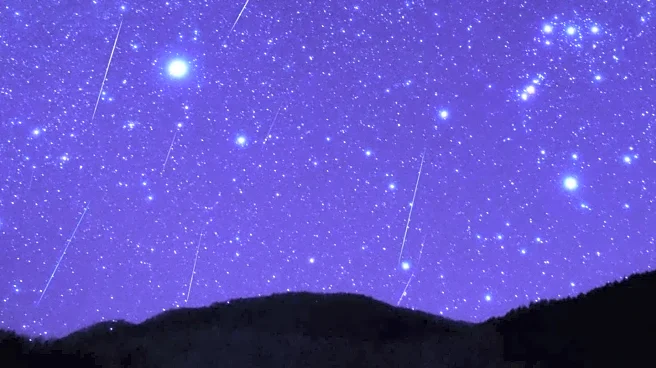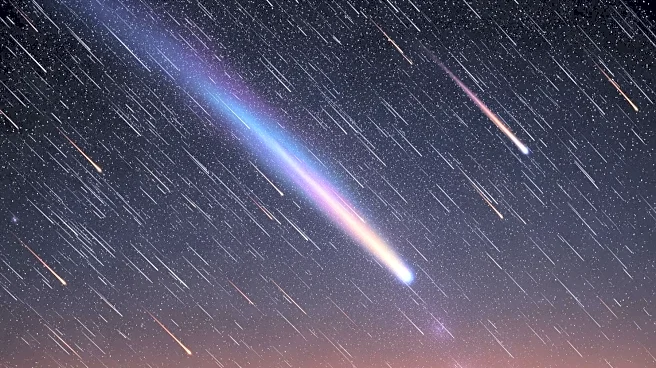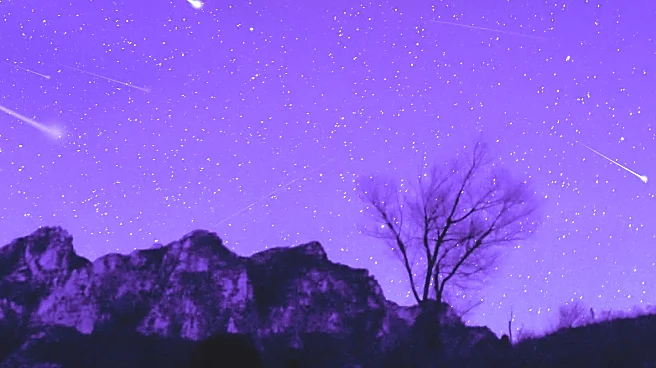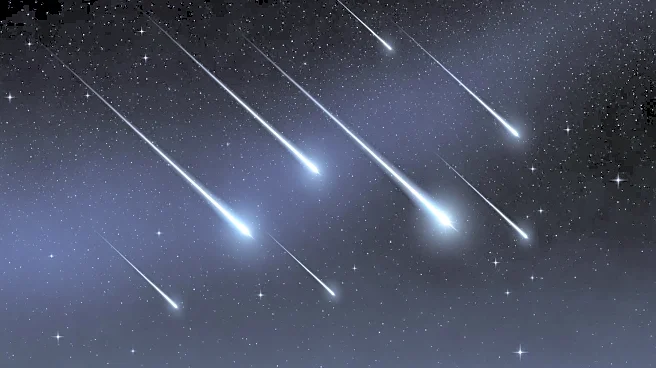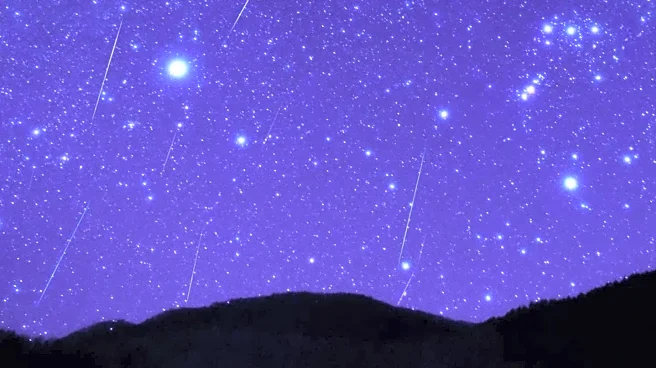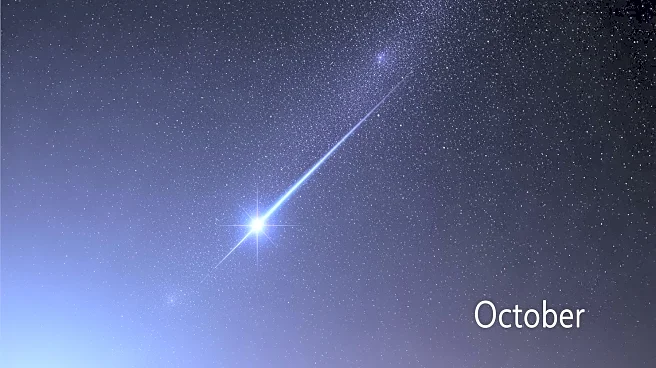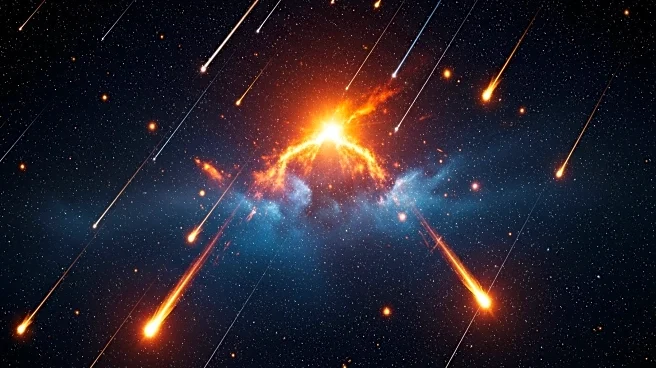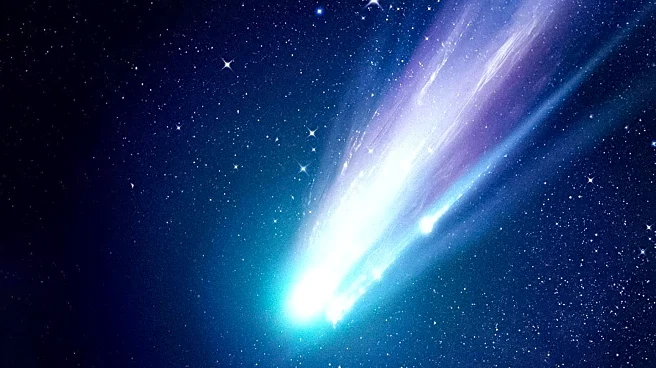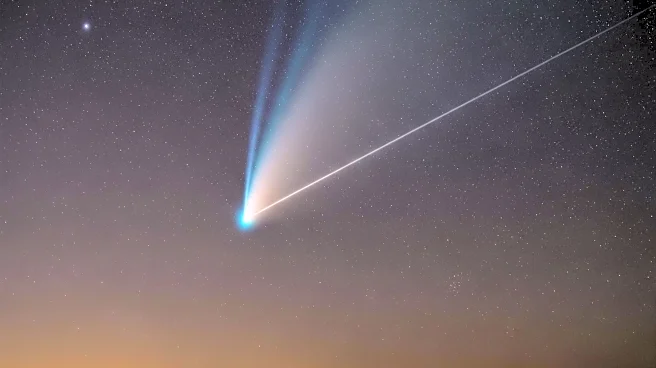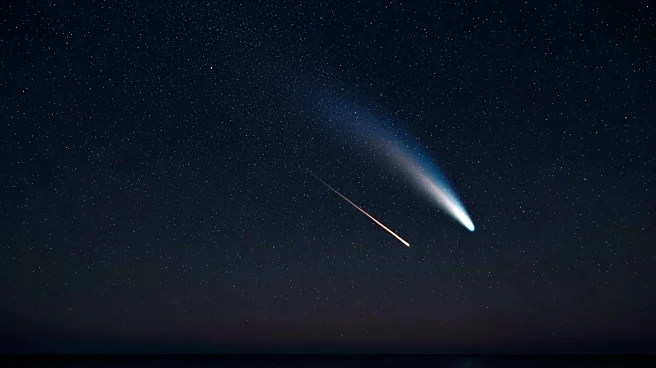What's Happening?
The Orionid meteor shower, originating from debris of Halley's Comet, is set to peak over Los Angeles on the nights of October 20 and 21. This annual celestial event is expected to offer a spectacular
view, with up to 20 meteors per hour visible under ideal conditions. The new moon will aid visibility by reducing natural light interference, although Los Angeles' significant light pollution remains a challenge. The meteors, known for their speed of 41 miles per second, often leave glowing trails in the sky. Stargazers are advised to look towards the constellation Orion, particularly its raised club, for the best viewing experience. Popular viewing locations include Griffith Observatory, Malibu Creek State Park, and Topanga State Park, though the observatory's public lawn will be closed until late November.
Why It's Important?
The Orionid meteor shower provides a unique opportunity for residents and visitors in Los Angeles to engage with astronomical phenomena, fostering public interest in space and science. Despite the challenges posed by urban light pollution, the event encourages people to seek out darker areas, potentially boosting local tourism to nearby parks and designated dark sky zones. This annual event also highlights the ongoing issue of light pollution in urban areas, prompting discussions on environmental impacts and the importance of preserving natural night skies. The meteor shower serves as a reminder of the broader universe and our place within it, offering a moment of reflection and wonder.
What's Next?
As the peak viewing days approach, local observatories and parks may see increased visitor numbers, necessitating crowd management and safety measures. The event could also inspire educational programs and community events focused on astronomy and environmental awareness. In the longer term, the interest generated by the meteor shower might lead to increased advocacy for light pollution reduction initiatives in urban areas. Additionally, the event may prompt further exploration of how urban environments can balance development with the preservation of natural phenomena.
Beyond the Headlines
The Orionid meteor shower underscores the cultural and scientific value of preserving dark skies. It raises awareness about the impact of light pollution on both human health and wildlife, as excessive artificial light disrupts natural rhythms. The event also highlights the importance of public access to scientific knowledge and the role of observatories and educational institutions in fostering a deeper understanding of our universe. As urban areas continue to expand, the challenge of maintaining access to natural night skies becomes increasingly relevant, prompting discussions on sustainable urban planning and environmental stewardship.
